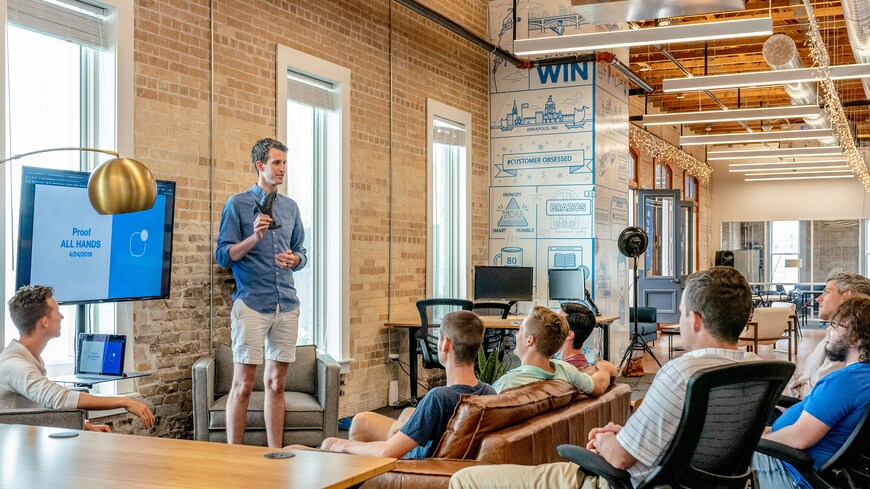Welcome to the dynamic duo of Laravel and Docker – a match made in developer heaven! If you’re looking to supercharge your Laravel development process and streamline your workflow, then you’ve come to the right place. In this blog post, we’ll dive into how Docker can revolutionize your Laravel development environment, making it easier than ever to build, test, and deploy applications with speed and efficiency. So grab your virtual containers and let’s embark on this exciting journey together!
Benefits of Using Docker for Laravel Development
When it comes to Laravel development, integrating Docker into your workflow can offer a multitude of benefits. Docker provides a consistent environment across different machines, ensuring that your Laravel project runs smoothly regardless of the development setup. This eliminates the notorious “It works on my machine” issue and streamlines collaboration among team members.
Docker allows for easy scalability by enabling you to quickly spin up multiple containers for testing or deployment purposes. This flexibility is especially valuable when working on complex Laravel applications that require various dependencies and services.
Docker’s lightweight nature means that you can efficiently utilize system resources without sacrificing performance. By containerizing your Laravel application with Docker, you can optimize resource allocation and eliminate unnecessary overhead.
Leveraging Docker for Laravel development enhances efficiency, promotes consistency in environments, facilitates collaboration among team members, and simplifies the scaling process – making it an invaluable tool for modern web developers.
Setting Up a Laravel Development Environment with Docker
Setting up a Laravel development environment with Docker is a game-changer for developers. It allows for easy and seamless setup without worrying about compatibility issues. The first step is to install Docker on your machine, which can be done quickly by following the official documentation.
Next, you’ll need to create a `Dockerfile` in your Laravel project directory to specify the environment settings. This file will define the base image, dependencies, and configurations needed for your application to run smoothly within a container.
After setting up the `Dockerfile`, it’s time to create a `docker-compose.yml` file that will orchestrate multiple containers if needed. This file will define services, networks, and volumes required for your Laravel application.
Execute `docker-compose up` in your project directory to start all the defined containers and access your Laravel development environment through a web browser. With Docker, setting up a Laravel development environment has never been easier!
Best Practices for Using Laravel and Docker Together
When using Laravel and Docker together, it’s essential to follow best practices to streamline your development process. One key practice is to define clear container dependencies in your Dockerfile, ensuring smooth integration between Laravel and other services. Additionally, make use of multi-stage builds to optimize image size and enhance deployment efficiency.
Utilize environment variables effectively for configuration management, allowing for easy customization across different environments. It’s also advisable to set up a separate network for your containers to isolate them from external interference.
Regularly update your Docker images and dependencies to maintain security and performance standards. Remember to document your setup thoroughly for future reference or team collaboration purposes. By following these best practices, you can ensure a seamless experience when working with Laravel and Docker in tandem.
Troubleshooting Common Issues with Laravel and Docker
One common issue when using Laravel with Docker is encountering conflicts between different versions of dependencies. This can lead to errors and inconsistencies in the application’s behavior. To troubleshoot this, ensure that all packages are compatible with each other and update them if necessary.
Another challenge developers may face is slow performance due to the resources allocated to Docker containers. To address this, optimize your container settings by adjusting memory limits and CPU allocations according to your project’s requirements.
Network configuration problems can arise, causing difficulties in communication between containers or external services. Verify that the network configurations are correctly set up and check for any firewall restrictions that might be blocking connections.
Permissions issues on file systems within Docker containers can cause frustration when trying to run Laravel commands or access files. Make sure file permissions are properly configured within the containers to avoid such obstacles during development.
Conclusion
With Docker, Laravel development becomes more efficient and streamlined. By leveraging the benefits of containerization, developers can easily set up consistent environments across different machines and collaborate seamlessly on projects. The ease of deployment and scalability offered by Docker makes it a valuable tool for any Laravel developer looking to optimize their workflow. Integrating Laravel with Docker is a powerful combination that can greatly enhance the development process and help teams deliver high-quality applications faster.
